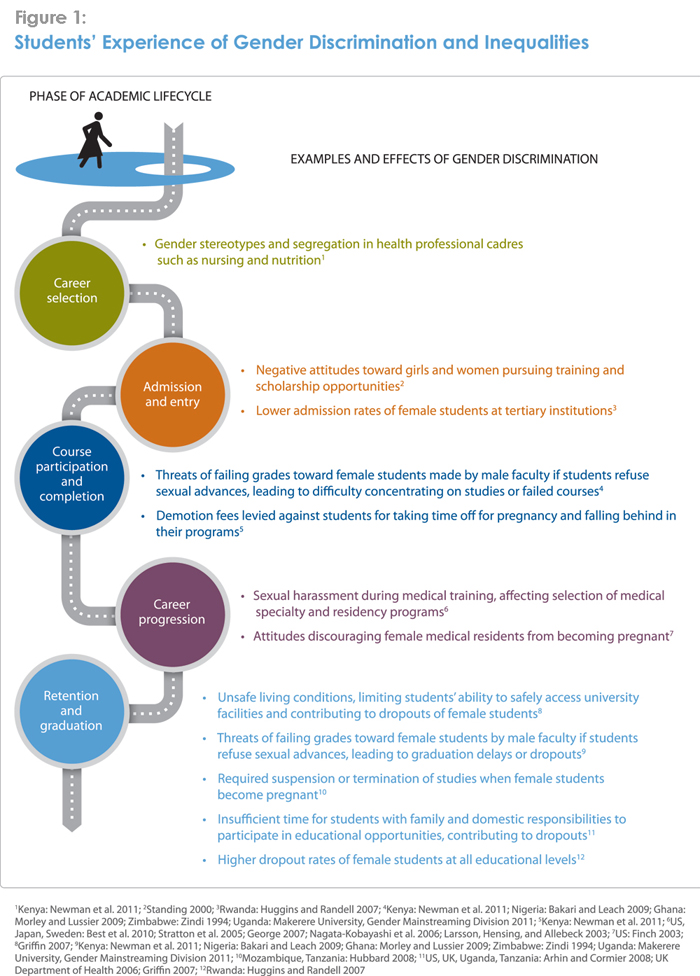Forms of gender discrimination in preservice education settings
Forms of discrimination such as occupational segregation by gender1, sexual harassment2, and discrimination related to pregnancy and family responsibilities can affect students’ opportunities, treatment, and ability to complete their studies. They also limit faculty members’ career satisfaction, advancement, and economic opportunities. Gender discrimination may result in teachers leaving the educational institution or students not graduating and entering the health workforce. This has consequences for the quality and scale of health services, particularly since gender discrimination primarily affects female health workers, who constitute a large proportion of many countries’ health workforces (Standing 2000; George 2007), and who also face a continuation in the workplace of the types of gender discrimination experienced in preservice education (Gregory 2003).
Students
Figure 1 describes examples from the literature of gender discrimination against health professional and higher education students throughout their academic life cycle. Sexual harassment and assault, mainly targeted at female students, have been well-documented in primary and secondary schools and universities in both high- and low-resource settings (Mirsky 2003). Cultural beliefs as well as gender norms and stereotypes create environments in which sexual harassment and/or assault are normalized but not reported, and perpetrators are unpunished. It can be difficult for some students to concentrate on or complete their coursework while being threatened, harassed, or assaulted by other students or teachers.
In addition, gender-blind institutional policies and practices prevent or limit female students from participating in classes, practica, and other curricular offerings by failing to consider students’ family responsibilities or potential safety issues. For example, as one Kenyan health PSE student stated, “We have different roles. If we go home the two of us, I make sure the baby is well fed, then asleep, husband taken care of…that affects my concentration…while [when] he goes home he expects food [to] be ready” (Newman et al. 2011, 30). At some point, students may need to discontinue studies because of the lesser importance attributed to female education, especially in poor countries.
1 Occupational segregation refers to the concentration of men and women in different jobs or in jobs at different hierarchical levels.
2 Sexual harassment refers to unwanted, unwelcome, or offensive conduct that changes the terms and conditions of school or work, where either a person’s rejection of, or submission to, such conduct is used explicitly or implicitly as a basis for a decision that affects that person’s career; or conduct that creates an intimidating, hostile, or humiliating work environment for the recipient.


